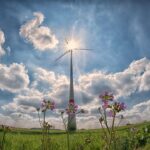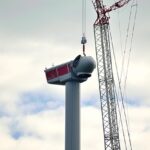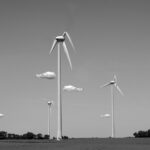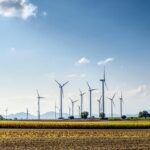Frequently Asked Questions (FAQ) – Vibanel Wind Power
General Information
What is Vibanel?
Vibanel is a leading provider of wind power solutions, committed to generating clean, renewable energy through innovative wind farm technology. Our mission is to harness wind energy to create a sustainable future while providing reliable electricity to communities around the world.
What is wind power?
Wind power is the process of converting wind energy into electricity using wind turbines. As the wind blows, it turns the blades of the turbine, which spins a generator that produces electricity. This clean energy source contributes significantly to reducing greenhouse gas emissions and combating climate change.
Wind Energy Technology
How do wind turbines work?
Wind turbines consist of blades, a rotor, a generator, and a tower. As the wind blows, it passes over the blades, causing them to turn. This rotation is transferred to a generator through a shaft, which converts the mechanical energy into electrical energy. The generated electricity is then transmitted to the power grid for distribution.
What types of wind turbines do you use?
We use various types of wind turbines, including horizontal-axis and vertical-axis turbines. Horizontal-axis turbines are the most common and are typically used in large wind farms. Vertical-axis turbines are often utilized in smaller installations or urban environments where wind conditions may vary.
What is the lifespan of a wind turbine?
The average lifespan of a wind turbine is approximately 20 to 25 years. However, with regular maintenance and technological advancements, many turbines can operate effectively beyond their expected lifespan. We prioritize regular inspections and maintenance to ensure optimal performance.
Environmental Impact
Is wind power sustainable?
Yes, wind power is one of the most sustainable forms of energy. It harnesses a limitless resource—the wind—producing electricity without greenhouse gas emissions or air pollution. Additionally, once a wind farm is installed, the land can still be used for agriculture or other purposes.
What are the environmental benefits of wind power?
- Reduces greenhouse gas emissions
- Minimizes air pollutants
- Conserves water compared to traditional power generation
- Supports local wildlife and ecosystems when thoughtfully sited
Are wind turbines harmful to wildlife?
While some wildlife, particularly birds and bats, may be affected by wind turbines, they remain a much less harmful energy source compared to fossil fuels. At Vibanel, we conduct thorough environmental assessments before site selection and implement measures to mitigate impacts on wildlife.
Economics and Benefits
What are the economic benefits of wind energy?
Wind energy creates jobs, stimulates local economies, and reduces energy costs. It offers long-term price stability, as the cost of wind energy is largely determined by upfront capital costs, rather than fluctuating fuel prices. Moreover, investment in wind power can lead to lower electricity bills for consumers.
How does wind power affect electricity prices?
Wind power can help stabilize and lower electricity prices over time. As the cost of wind energy continues to decline, it becomes increasingly competitive with traditional energy sources. This competition can drive down prices in the market, benefiting consumers.
Can I invest in wind energy?
Yes, there are various ways to invest in wind energy. You can invest in stock of wind energy companies, participate in community wind projects, or even consider installing small-scale wind turbines on your property. We also offer information on potential investment opportunities for individuals and organizations interested in wind energy.
Community Engagement
How does Vibanel engage with local communities?
At Vibanel, we believe in fostering strong relationships with the communities where we operate. We conduct public outreach initiatives, host informational sessions, and encourage feedback to address any concerns. Our commitment to community engagement ensures that local voices are heard and their needs are considered in our projects.
What benefits can local communities expect from a wind farm?
- Job creation during construction and ongoing operations
- Community investment through local partnerships and programs
- Increased local tax revenue
- Access to clean, renewable energy
How are decisions made about wind farm locations?
Wind farm locations are chosen based on several factors, including wind resource availability, environmental impact assessments, and community input. We conduct extensive research and analysis to ensure the chosen sites maximize efficiency while minimizing negative impacts.
Safety and Maintenance
How safe are wind turbines?
Wind turbines are designed with safety as a priority. They are built to withstand extreme weather conditions. Modern turbines incorporate advanced safety systems to shut down automatically in hazardous conditions. Furthermore, our maintenance teams conduct regular inspections to ensure the structural integrity and operational safety of our turbines.
How often do wind turbines require maintenance?
Wind turbines typically require routine maintenance every six months to a year, depending on operational conditions. This maintenance includes inspections, lubrications, and necessary repairs. We invest in comprehensive maintenance programs to ensure optimal performance and longevity of our turbines.
What happens if a turbine malfunctions?
If a turbine malfunctions, our monitoring systems immediately alert our maintenance team. We prioritize rapid response to repair any issues and minimize downtime. Our trained personnel are equipped to handle various technical problems ensuring continuous energy production.
Future of Wind Power
What is the future of wind energy?
The future of wind energy is promising as technology advances and costs continue to decline. With increasing global demand for clean energy, wind power will likely play a crucial role in meeting energy needs sustainably. Continuous investments in research and development will further enhance the efficiency and output of wind energy sources.
How can individuals support wind energy initiatives?
Individuals can support wind energy initiatives by advocating for renewable energy policies, supporting local wind projects, reducing energy consumption, and considering sustainable practices in their daily lives. Engaging with your community and encouraging local government to invest in renewable energy sources can also make a significant impact.
Contact Information
Who can I contact for more questions?
For further inquiries about our wind power projects, community engagement, or investment opportunities, please reach out to our team through our official channels. We are committed to responding to your questions and providing additional information as needed.
Conclusion
Wind energy is a transformative and sustainable resource that plays a significant role in shaping a cleaner future. At Vibanel, we are dedicated to advancing the wind power industry through innovation, community engagement, and environmental stewardship. For any additional questions or topics not covered here, feel free to reach out to us.






